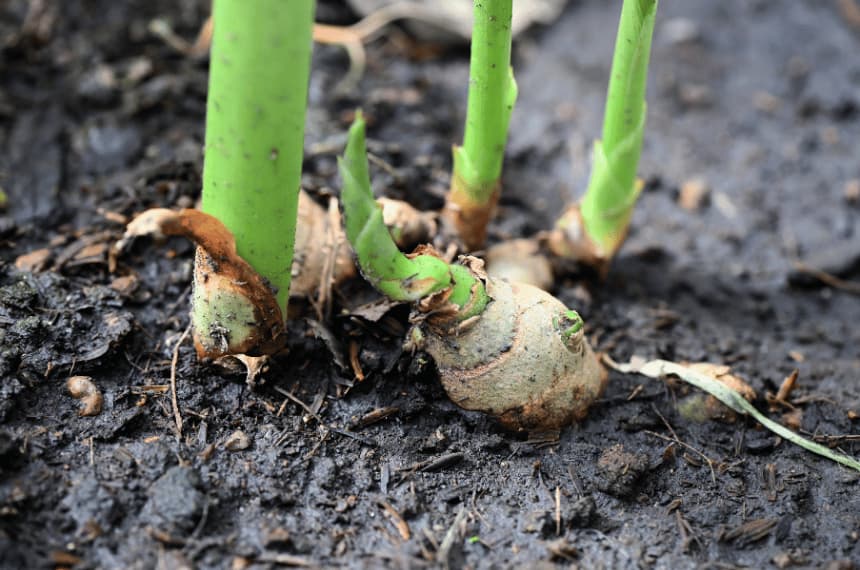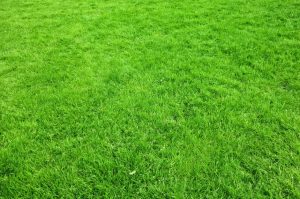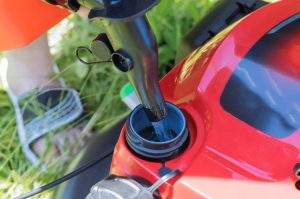Ginger, a revered spice with a rich tapestry of history, has found an unexpected home in Perth’s Mediterranean climate.
While traditionally associated with tropical regions, this aromatic rhizome has shown remarkable adaptability, flourishing in Perth’s unique blend of warm summers and mild winters. This guide delves deep into ginger cultivation in Perth, from understanding the city’s distinct advantages to exploring the diverse ginger varieties and their cultivation techniques.
Whether you’re a seasoned gardener or a curious novice, our comprehensive journey through ginger’s nuances promises to enlighten and inspire.
Unlocking Perth’s ginger potential
With its Mediterranean climate, Perth offers a unique blend of warm summers and mild winters, making it a promising region for ginger cultivation. While many associate ginger with tropical climates, Perth’s distinct weather pattern, characterised by wet winters and hot, dry summers, provides an environment where ginger can thrive, especially when given the right care.
The soil in Perth, predominantly sandy and well-draining, is another advantage for ginger growers. Ginger rhizomes prefer soil that doesn’t retain excessive moisture, which can lead to rot. By enriching Perth’s natural soil with organic compost and ensuring proper irrigation, ginger plants can flourish and produce plump, aromatic rhizomes.
While Perth might not be the traditional hub for ginger cultivation, its unique climate and soil conditions, combined with the passion and expertise of local gardeners, are unlocking its ginger-growing potential.
A world of ginger: Varieties to explore
Ginger, while commonly referred to as a singular plant, actually encompasses a world of diverse varieties, each with its unique characteristics and flavour profiles. For those in Perth looking to delve into ginger cultivation, here are some varieties that are not only suitable for the region but also offer a delightful array of tastes and aromas:
Common Ginger (Zingiber officinale):
- Characteristics: This is the most widely cultivated and recognised variety. It has green stems and leaves, and the rhizomes are light brown with an intense aroma.
- Growth pattern: Prefers partial shade and well-draining soil. It typically matures in 8-10 months.
- Flavour Profile: Spicy and slightly sweet, it’s the classic ginger taste most are familiar with.
Galangal (Alpinia galanga):
- Characteristics: Often referred to as Thai ginger, it has a distinct reddish-brown skin.
- Growth pattern: Thrives in well-draining soil with regular watering. It’s a bit taller than common ginger.
- Flavour profile: Sharper and more citrusy than common ginger, it’s a staple in many Southeast Asian dishes.
Torch Ginger (Etlingera elatior):
- Characteristics: Known for its stunning red or pink flowers, it’s as much an ornamental plant as a culinary one.
- Growth pattern: Prefers humid conditions and partial shade. It can grow quite tall, up to 6 metres in ideal conditions.
- Flavour profile: The buds are the primary edible part, offering a tangy flavour, commonly used in salads and traditional dishes.
Myoga Ginger (Zingiber mioga):
- Characteristics: Unlike other varieties, the flower buds and young shoots of Myoga are sought after.
- Growth Pattern: It’s a shade-loving plant, making it perfect for those areas in the garden that don’t receive direct sunlight.
- Flavour Profile: Mild and slightly sweet, it’s a popular addition to Japanese cuisine.
Fingerroot (Boesenbergia rotunda):
- Characteristics: Recognisable by its multiple finger-like growths stemming from the main rhizome.
- Growth pattern: Enjoys well-draining soil and can tolerate more sunlight than other varieties.
- Flavour profile: Earthy with a hint of pepper, it’s used both as a spice and for its medicinal properties in traditional remedies.
For those in Perth eager to experiment, these varieties offer a chance to explore the rich tapestry. Whether you’re a culinary enthusiast or simply love gardening, there’s a ginger variety waiting for you to discover. Remember, the key to a successful ginger garden in Perth lies in understanding the specific needs of each type and catering to them.
Best ginger variety for Perth’s climate
While each ginger variety has its unique charm and flavour profile, one stands out for me, especially considering Perth’s unique climate: the Common Ginger (Zingiber officinale).
Here’s why it’s my personal favourite for Perth:
- Adaptability: Common Ginger seems to have a natural affinity for Perth’s Mediterranean climate. It thrives in our warm summers and can easily handle the mild winters, especially if given a bit of protection during the colder months.
- Flavour: The spicy yet slightly sweet taste of Common Ginger is versatile. Whether I’m whipping up a classic ginger tea, adding a zing to my stir-fries, or baking some ginger-infused desserts, it never disappoints.
- Growth pattern: I’ve noticed this variety is quite forgiving over the years. Even if you’re a beginner, with basic care – regular watering, well-draining soil, and a spot with partial shade – you can expect a bountiful harvest.
- Aesthetic appeal: While it’s primarily grown for its rhizomes, the green stems and leaves of the Common Ginger add a touch of tropical charm to the garden. It’s a pleasure to watch it grow and flourish.
I’ve reserved a special spot for Common Ginger in my garden, where I can see it from my kitchen window. Every morning, as I sip my tea, I’m reminded of the countless dishes, remedies, and memories this plant has been a part of. I wholeheartedly recommend beginning with Common Ginger for those in Perth looking to start their ginger journey. It’s a resilient, flavourful, and rewarding variety to grow.
When to plant ginger in Perth
The best time to plant ginger in Perth is at the beginning of spring, typically around September. This allows the ginger rhizomes to benefit from the increasing warmth as summer approaches. Planting in spring ensures that the ginger has a long, warm growing season ahead, essential for the rhizomes to mature.
By the time the cooler months of autumn and the onset of winter arrive, the ginger plant would have completed most of its growth cycle. During the mild Perth winters, the plant goes dormant, conserving energy and preparing for the next growth spurt come spring.
Understanding the significance of timing
Planting ginger at the right time in Perth is crucial. If planted too early, the cold of the late winter can hinder germination. If planted too late, the ginger might not have enough time to mature before the next winter. Timing the planting right ensures a healthy growth cycle and a bountiful harvest.
For a broader perspective on what vegetables thrive in Perth’s climate and when to plant them, our comprehensive guide on vegetables to plant now in Perth offers valuable insights.

How to grow ginger in Perth
Growing ginger in Perth might seem challenging, given its Mediterranean climate. Still, you can enjoy a bountiful harvest with the right steps and considerations. Here’s a detailed guide to help you navigate the process:
Soil preparation
- Type: Ginger prefers well-draining soil. Given Perth’s predominantly sandy soil, this works in your favour. However, ginger also thrives in rich, loamy soil.
- Enriching the soil: Enrich the soil with well-decomposed compost or organic matter before planting. This provides essential nutrients and improves soil structure, ensuring optimal growth for the ginger rhizomes.
- pH Level: Ginger prefers slightly acidic to neutral pH levels, around 6.0 to 7.5. If unsure, consider getting a soil pH testing kit.
Planting techniques
- Choosing rhizomes: Opt for plump, healthy ginger rhizomes with several eye buds. You can source these from reputable nurseries or even use organic ginger from the store.
- Pre-sprouting: Before planting, you can pre-sprout the ginger. Place the rhizome in a shallow tray with enough water to moisten it. Within a few weeks, you’ll notice sprouts emerging.
- Planting depth: Plant the ginger rhizomes about 2-4 centimetres deep, ensuring the eye bud faces upwards.
- Spacing: If planting multiple rhizomes, maintain a spacing of about 20-25 centimetres between each.
- Location: Choose a location that receives partial sunlight. While ginger can tolerate direct sunlight in Perth’s hot summer, it’s best to provide some shade during the peak hours.
Growing ginger in pots
If space is a constraint or you prefer container gardening, ginger grows well in pots. Ensure the pot is at least 30 centimetres deep and has good drainage. Use a mix of potting soil and compost for optimal growth. Pots also allow you to move the plant around, ensuring it gets the right amount of sunlight.
Maintenance
- Watering: Ginger likes moist soil but not soggy conditions. Water regularly, but ensure the soil drains well to prevent rot.
- Mulching: Apply a thick layer of organic mulch around the ginger plant. This helps retain moisture, suppress weeds, and regulate soil temperature.
- Fertilising: Feed the ginger plant every few weeks with a balanced liquid fertiliser to ensure it gets all the necessary nutrients.
- Pests and diseases: While ginger is pest-free, watch for aphids and fungal diseases. Regularly inspect the plant and take prompt action if you notice any issues.
- Harvesting: Ginger is ready for harvest in about 8-10 months. You can harvest the entire plant or take what you need, allowing the rest to grow.
Warding off challenges: Pest and disease management
Ginger, a robust plant, can sometimes prey on certain pests and diseases. Recognising these threats early and implementing preventive measures can ensure a healthy ginger crop. Here’s a guide to help you identify and manage these challenges organically:
Common pests and diseases
1. Bacterial Wilt (Ralstonia solanacearum):
- Symptoms: Green leaves infected with the pathogen roll and curl (“green wilt”); leaves turn yellow and then necrotic; plants become stunted and die; rhizomes are discoloured and water-soaked and may rot inside.
- Organic solution: Plant ginger in well-draining soils where ginger had not previously been grown; use only pathogen-free seed; plant on hills to aid soil drainage and promote airflow around the rhizome; rotate ginger with non-hosts of bacterial wilt.
2. Dry Rot (Fusarium and Pratylenchus complex):
- Symptoms: Initially, the lower leaves exhibit yellow tips followed by complete yellowing. Infected rhizome shows a brownish ring, particularly at the cortical region.
- Organic solution: Treating seed with Bordeaux mixture before planting and solarising the soil can help reduce the disease’s incidence.
3. Rhizome Rot/Soft Rot/Pythium Rot (Pythium aphanidermatum, P. vexans, P. myriotylum, Fusarium sp.):
- Symptoms: Stunted plant growth; yellow leaves and stems; root system rotted, mushy, and turning black; rotted rhizome gives off a foul odour.
- Organic solution: Plant ginger in well-draining soils or on hills; do not plant any seed pieces showing symptoms; treat seed pieces with hot water or appropriate organic fungicides before planting; destroy all crop debris after harvest.
4. Chinese Rose Beetle (Adoretus sinicus):
- Symptoms: “Shot-hole” appearance of leaves; entire leaf consumed except for the leaf veins.
- Organic solution: Chinese rose beetles are attracted to dim light and repelled by bright light, so shining bright light on plants may deter them. Covering young plants can also protect them.
5. Root-knot and Burrowing Nematodes (Meloidogyne spp., Radopholus similis):
- Symptoms: For root-knot nematodes, water-soaked lesions on roots and galls on roots. For burrowing nematodes, the appearance of small, water-soaked shallow lesions on rhizomes later turn brown.
- Organic solution: Plant resistant varieties; solarise soil to reduce nematode populations; treat rhizomes with hot water before planting.
Preventive measures
- Crop rotation: Regularly changing the crops grown in a particular field can break the life cycle of pests and diseases.
- Healthy planting material: Always use disease-free rhizomes for planting.
- Regular monitoring: Regularly inspect plants for signs of pests or diseases.
- Natural predators: Encourage the presence of natural predators like ladybugs and spiders in the garden.
- Organic sprays: Neem oil, garlic sprays, and other organic solutions can be used to deter pests.
In short, while challenges exist, you can ensure that your ginger plants remain healthy and thrive with the right knowledge and timely action. Remember, prevention is always better than cure, so keep an eye out and act promptly at the first sign of trouble.
Wrapping up
Growing ginger in Perth has been an enlightening experience for us at Yard Work. From understanding the nuances of Perth’s unique climate to exploring the myriad ginger varieties and diving deep into the planting protocols, it’s been a journey of discovery, challenges, and immense satisfaction.
Every plant we nurture tells a story, and ginger, with its aromatic allure and myriad health benefits, has an ancient and ever-evolving tale. The beauty of gardening is that it’s not just about the end product but the process, the learning, and the connections we make along the way. Whether networking with fellow ginger enthusiasts or attending local gardening events, the community around this humble rhizome is as enriching as its cultivation.
If you’ve been inspired by our ginger-growing guide, we encourage you to plunge. Start with a small pot or a patch in your garden, and let the magic of nature unfold. And if you want to diversify your garden even further, why not try growing tomatoes in Perth? Like ginger, tomatoes offer various varieties and techniques waiting to be explored!
FAQs
Where is the best place to plant ginger?
Ginger thrives in well-draining, loamy soil and prefers partial shade. It’s best planted in a location that receives morning sunlight and afternoon shade, especially in hot climates.
Will supermarket ginger root grow?
Yes, supermarket ginger root can grow, provided it’s fresh and untreated. Look for rhizomes with visible eye buds and ensure they’re free from signs of rot or desiccation.
Does ginger need full sun?
No, ginger doesn’t require full sun. In fact, it prefers partial shade, especially during the hottest parts of the day. Morning sunlight with afternoon shade is ideal for ginger.
What is the easiest way to plant ginger?
The easiest way to plant ginger is to choose fresh rhizomes with eye buds, plant them 2-4 centimetres deep in well-draining soil, ensuring the eye bud faces upwards, and water regularly.
Does ginger come back every year?
Yes, ginger is a perennial plant. Once planted, it can regrow yearly, especially in regions with mild winters. The rhizomes can be overwintered indoors in colder climates and replanted in spring.
Does ginger multiply when planted?
When ginger is planted, the rhizome grows and expands, producing multiple offshoots or “fingers.” Over time, a single ginger rhizome can develop into a larger cluster, multiplying in the ground.






